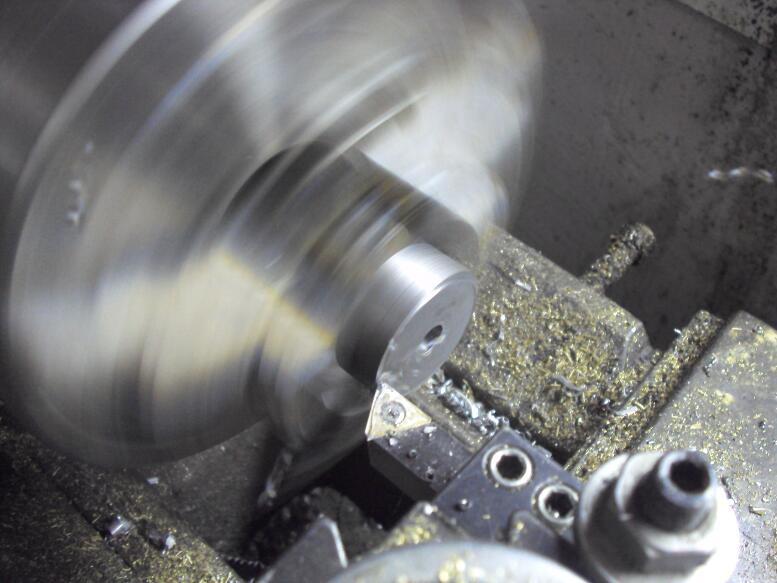vederstein
Must do dumb things....
- Joined
- Feb 26, 2011
- Messages
- 917
- Reaction score
- 744
I wasn't really sure if I wanted to document the build of my version of the "hula" engine. But my wife convinced me that it would be good to do so. Perhaps she thinks this idea has never been done before. I don't know. But she's probably right. If I don't document the build, others cannot learn from when I eventually screw up.

The plans are of my own and can be found here:
http://www.homemodelenginemachinist.com/showthread.php?t=26783
I had already made a few parts prior to taking pictures, so I cannot talk about those. They are bars with holes drilled in them anyways, so those are pretty easy.
Otherwise I started with the main hub. This is probably the most complex part to make.
Because I used barstock of the correct OD to start with, I chucked the blank into the four jaw lathe chuck and centered the part. Three jaws are never perfectly centered I can be more accurate with the four jaw.

Then I faced off the blank.

From there I drilled and bored out the part.






The plans are of my own and can be found here:
http://www.homemodelenginemachinist.com/showthread.php?t=26783
I had already made a few parts prior to taking pictures, so I cannot talk about those. They are bars with holes drilled in them anyways, so those are pretty easy.
Otherwise I started with the main hub. This is probably the most complex part to make.
Because I used barstock of the correct OD to start with, I chucked the blank into the four jaw lathe chuck and centered the part. Three jaws are never perfectly centered I can be more accurate with the four jaw.
Then I faced off the blank.
From there I drilled and bored out the part.




Last edited:


























































